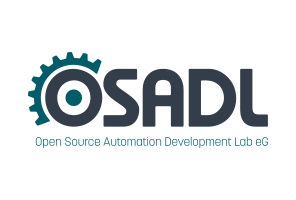Dates and Events:
|
OSADL Articles:
2023-11-12 12:00
Open Source License Obligations Checklists even better nowImport the checklists to other tools, create context diffs and merged lists
2022-07-11 12:00
Call for participation in phase #4 of Open Source OPC UA open62541 support projectLetter of Intent fulfills wish list from recent survey
2022-01-13 12:00
Phase #3 of OSADL project on OPC UA PubSub over TSN successfully completedAnother important milestone on the way to interoperable Open Source real-time Ethernet has been reached
2021-02-09 12:00
Open Source OPC UA PubSub over TSN project phase #3 launchedLetter of Intent with call for participation is now available |
The OSADL Community

Open Source Software for Automation and Other Industries
Once upon a time, a project manager ...
Project Manager: "We need to get someone to develop a Linux driver for our new machine controller. Here's a purchase order for the work."
Purchase Department: "Okay. Let me check the purchase order to make sure it follows our standard procedure: NDA to be executed, source going into company's safe ... "
Project Manager: "Nope, we're going with Open Source - source gets published to the Internet."
Purchase Department: "What? We're paying for the development but the source code goes out to the Internet? If everybody can use the source code, why are we the only ones paying for this? No way this can fly!"
The solution: OSADL
Open Source is a way to get a broader community to help with development and to share in its costs. OSADL allows those members interested in developing particular Open Source software to come together in an OSADL project supported by membership fees. With the agreement of a majority of members, OSADL can delegate the development of Open Source software components. Thus, what is (financially) impossible for the individual (company), many (OSADL members) can do.![]()
Examples to showcase how OSADL helps
Open Source license compliance
Open Source License Checklists Raw data |
Open Source Policy Template |
Docker Base Image |
The OSADL Quick Linux Compliance Check: Do you use Linux compliantly in your products? | ||
Real-time Linux and network communication
QA Farm Real-timeLinks to systems under testOSADL RT diagnostic patches |
Latency monitoringOPC UA PubSub over TSN demonstratorVirtualization and host real-time |
Latency fightingOverview on all systemsRelated video (HOT 2021) |






























































